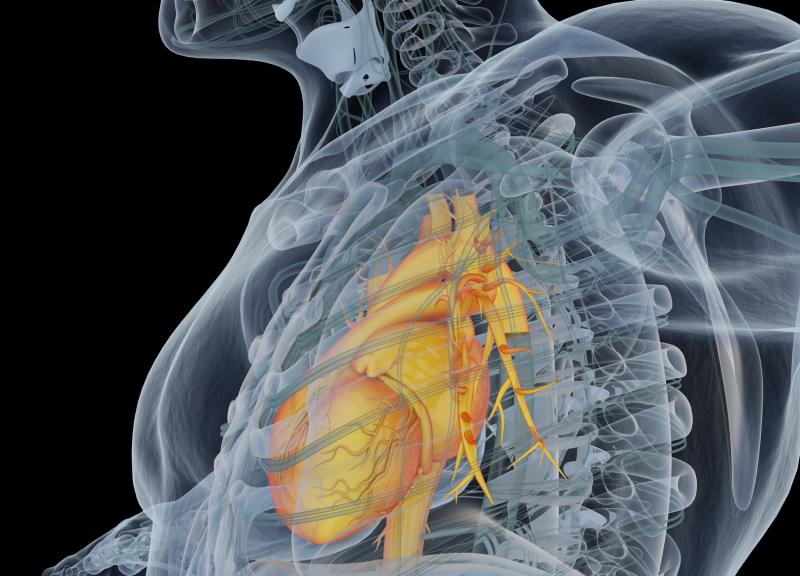
A recent study has detected left ventricular thrombus in <3 percent of patients who underwent primary angioplasty for ST-elevation myocardial infarction (STEMI). No association exists between the presence of left ventricular thrombus and a higher risk of systemic thromboembolism.
A total of 2,608 patients underwent primary angioplasty for STEMI, of whom 1,645 (63 percent) had a transthoracic echocardiogram performed during the index hospital admission. Transthoracic echocardiography detected left ventricular thrombus in 40 patients (2.4 percent).
Those with left ventricular thrombus appeared to be at increased risk of developing atrial fibrillation in the immediate postinfarction period (15 percent vs 5.4 percent; p=0.025).
The primary endpoint of a composite of all-cause mortality, stroke and systemic thromboembolism at 1 year occurred in four (10 percent) patients with left ventricular thrombus and in 146 (9.1 percent) who did not (logistic regression hazard ratio, 0.79, 95 percent CI, 0.23–2.70).
This study recruited and sought to determine clinical outcomes in patients who underwent primary angioplasty for STEMI and had a transthoracic echocardiogram. For the primary endpoint, the authors used a logistic regression, adjusting for minimization variables including age, diabetes mellitus, hypertension and previous stroke, to compare the difference between the presence and absence of left ventricular thrombus.
“Left ventricular thrombus formation is a complication of acute myocardial infarction,” the authors said. “However, the incidence and risk of systemic thromboembolism in the era of primary angioplasty for STEMI is unclear.”